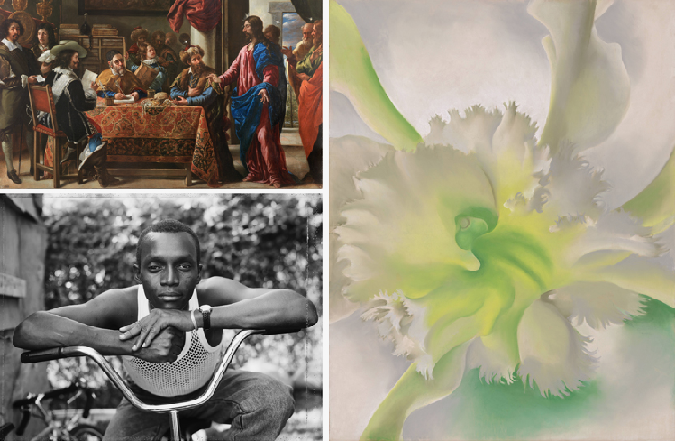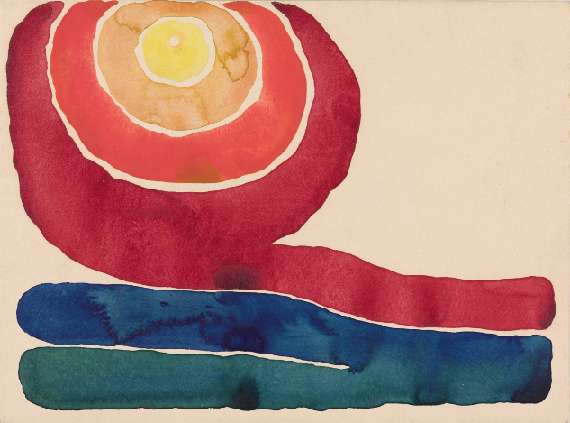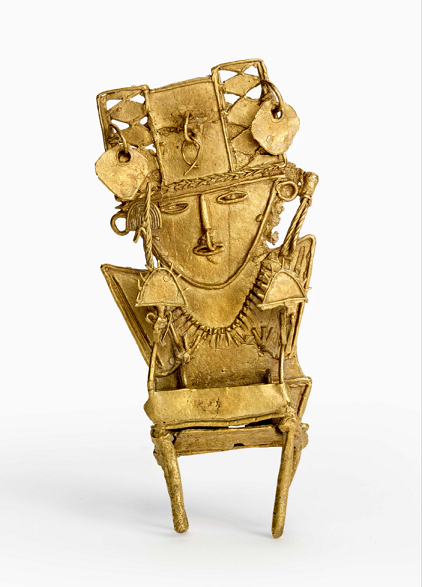
From the Year of Picasso to new solo presentations by Georgia O’Keeffe, Diego Rivera and María Berrío these North American exhibitions are must-sees in 2023
1. MARÍA BERRÍO: THE CHILDREN’S CRUSADE — 16 February to 6 August 2023, Institute of Contemporary Art, Boston
María Berrío creates immersive large-scale works, collaging layers of torn Japanese paper, sequins and watercolours to create intricate utopias. Inspired by magical realism and folklore, her fairytale-like scenes are populated by women, children and animals — dreamy worlds where humanity and nature exist in harmony. Yet within these idealised scenes, Berrío brings to light the harsh present-day realities of political issues like global migration and family separation.

María Berrío (b. 1982), Cavalry, 2022. Collage with Japanese paper and watercolour paint on canvas. 72 × 90 in (182.9 × 228.6 cm). Courtesy of the Artist and Victoria Miro.
This exhibition is no exception: presenting a selection of new and existing works from her series The Children’s Crusade, the work blends the history of the 13th-century Children’s Crusade — and the mystical legends, fables, songs and artwork surrounding it — with the current mass migrations of peoples across the Mediterranean and the US border.
As Berrío explains, ‘The main focus and the main characters are children and their perceptions as seen through fantasy and magical realism. As the children embark on this arduous journey, they infuse the ordinary with the mythic, as their innocent and imagined interpretation of the world bumps against stark realities.’
2. DIEGO RIVERA’S AMERICA — 11 March to 31 July 2023, Crystal Bridges Museum of American Art
Diego Rivera was at the forefront of Mexican Muralism in the early-20th century. His public frescoes and murals, with their sprawling and highly detailed narrative scenes, extolled the lives of Mexico’s working people and the country’s Indigenous cultures. Influenced by the decade he spent amongst the avant-garde in Paris, his work promoted the revitalization of Mexican culture after the Mexican Revolution.
Diego Rivera’s America is the most in-depth examination of the artist’s work in over two decades, bringing together rarely seen works from private collections; major paintings on loan from museums; studies for pivotal mural projects in Mexico City, San Francisco, Detroit and New York; and large-scale digital projections that convey the immersive quality of his epic murals. Ten thematic galleries are dedicated to subjects that captured the artist’s imagination, from labour and industry to street markets. The exhibition focuses on Rivera’s work from the 1920s to the mid-1940s, when he was conceiving a new vision for North America, informed by his travels in Mexico and the United States.
3. JANNIS KOUNELLIS IN SIX ACTS — 1 April to 17 September 2023, Museo Jumex, Mexico City
A forefather of the Arte Povera movement, the Greek artist Jannis Kounellis undermined the sanctity of the gallery space as he juxtaposed materials like soil, coal, burlap, meat hooks, glass bottles, and even live animals. One of his most famous pieces featured 12 horses, which turned the exhibition space into a barn. While his practice spanned painting, sculpture, performance and installation, Kounellis insisted in 2016, ‘Everything I do is painting, even if I don’t touch a brush. I tell my truth as a painter.’
Jannis Kounellis In Six Acts, which includes some 50 works, offers the most extensive assessment of the artist’s career to date and is the first comprehensive survey of his work in Mexico. The exhibition and accompanying catalogue present his work as he wanted it to be seen — as a wide-ranging analysis of painting as a medium.
The show revisits Kounellis’s work through key stages of his trajectory, examining his paintings, sculptural projects, found objects, and large-scale installations — combining iconic works with pieces that have never been seen by the public until now.
4. JUAN DE PAREJA: AFRO-HISPANIC PAINTER — 3 April to 16 July 2023, Metropolitan Museum of Art, New York
This exhibition is the first to explore the life and work of the Afro-Hispanic painter Juan de Pareja (c. 1608-1670), widely known as the subject of Diego Velázquez’s iconic 1650 portrait. Pareja was enslaved for over 20 years in Velázquez’s studio and forced to work as his assistant; once released from bondage, Pareja spent the rest of his life working as an artist in his own right.

Juan de Pareja (1608-1670), Calling of Saint Matthew, 1661. Oil on canvas, 88 ⅝ × 10 ft 7 ⅞ in (225 × 325 cm). Museo Nacional del Prado.
The show is unprecedented in its unflinching interrogation of enslaved labour and multiracial society during Spain’s so-called ‘Golden age’. Portraits of Spain’s Black and Morisco populations by Francisco de Zurbarán, Bartolomé Esteban Murillo, and Velázquez, join pieces that chart the ubiquity of enslaved labour across media, from sculpture to jewellery. Velázquez’s portrait of Pareja is contextualised by his other portraits of the time, as well as the contract he wrote granting Pareja his freedom.
The exhibition culminates with the first public collection of Pareja’s paintings. In his time, critics dismissed his work as a mere reflection of Velázquez’s style, but this collection shows the variety and innovation within the oeuvre of Pareja, who bridged the art of the Western canon and the African diaspora.
5. DAWOUD BEY & CARRIE MAE WEEMS: IN DIALOGUE — 4 April to 9 July 2023, Getty Center, Los Angeles
Dawoud Bey and Carrie Mae Weems have been friends and colleagues since they first met in a photography class in Harlem over 40 years ago. Both artists explore race, oppressive power structures, gender identity and class in their work, through the prism of Black history and the daily realities that speak to the human condition.
Bey is known for his psychologically compelling portraits of communities that have been underrepresented in mainstream media and recorded history, and the empathy he brings to his subjects. Weems employs a rich tapestry of media forms, but her activism and adeptness at storytelling come to the fore in her photography. Famed for her Kitchen Table Series, where she positions herself as the subject with the kitchen table functioning as a stage for her to explore the different roles of Black womanhood, she uses this alter ego throughout her work to stand in for both the artist and audience.
Dawoud Bey & Carrie Mae Weems: In Dialogue brings these artists’ work together in five thematic groupings to shed light on their mutual engagement and shared visions.
6. GEORGIA O’KEEFFE: TO SEE TAKES TIME — 9 April to 12 August 2023, Museum of Modern Art, New York
Although best known for her flower paintings, Georgia O’Keeffe also made extraordinary works in charcoal, pencil, watercolour and pastel. The Museum of Modern Art in New York will showcase 120 of these works on paper, usually seen individually, along with key paintings. The first exhibition to ever focus on the artist’s drawings, it will give viewers a deeper insight into her belief that ‘to see takes time’.

Georgia O’Keeffe (1887-1986), Evening Star No. III, 1917. Watercolour on paper mounted on board, 8 ⅞ × 11 ⅞ in (22.7 × 30.4 cm). The Museum of Modern Art, New York. Gift of Mr. and Mrs. Donald B. Straus Fund, 1958.
O’Keeffe experimented and refined her vision on paper between 1915 and 1918, with her progressions of bold lines, frank nudes, and charcoal drawings, but even as she turned increasingly to painting on canvas, paper continued to give her the freedom to capture nature’s rhythms in a way that the permanence of the canvas would not allow. On sheets of paper, she could trace in series the spiralling trajectory of the sun as it descended or the changing aerial view from an airplane window.
As Samantha Friedman, the show’s curator, puts it, ‘She recognised the necessity of slowing down for her vision, and in turn her sequences of drawings invite us to take time in looking.’
7. JOSH KLINE: PROJECT FOR A NEW AMERICAN CENTURY — 19 April to 1 August 2023, Whitney Museum of American Art, New York
Josh Kline is renowned for his immersive installations that use video, sculpture, photography and design to interrogate how technology is changing what it means to be human in the 21st century. He often employs the very technologies and practices that he is scrutinizing — from deep-fake computer software to commercial advertising — turning them back on themselves.
His work is frequently punctuated with body parts, pharmaceuticals and sanitizing products. In his installation, Nine to Five, Eight to Four, Seven to Three, for example, janitor carts are piled high with disembodied human heads, feet and hands, lying amongst the cleaning supplies.

Josh Kline (b. 1979), In Stock (Walmart Worker’s Arms), 2018. 3D-printed sculpture in acrylic-based photopolymer resin, Walmart shopping cart, custom cardboard boxes, 39 × 26 × 44 in (99.06 × 66.04 × 111.76 cm). Courtesy of 47 Canal, New York, and Modern Art, London. Photograph by Joerg Lohse.
At its core, his work focusses on work and class, and how the most pressing issues of today – from disease to the weakening of democracy — affect the people who inevitably have to pick up the pieces: the labour force.
This exhibition will be Kline’s first museum survey, incorporating over a decade of his output with new installations and moving image works that look at the climate crisis from the perspective of essential workers.
8. YOUNG PICASSO IN PARIS — 12 May to 6 August 2023, Solomon R. Guggenheim Museum, New York
Pablo Picasso first arrived in Paris in autumn 1900, during the final weeks of the Exposition Universelle. At just 19, he threw himself headfirst into city life. Over the course of his two-month stay, and again when he returned the following spring, he frequented not just the galleries but also the bohemian cafés, nightclubs, and sensational dance halls of Montmartre.

Pablo Picasso (1881-1973), Le Moulin de la Galette, 1900. Oil on canvas, 35 ⅜ × 46 in (89.7 × 116.8 cm). Solomon R. Guggenheim Museum, New York. Gift of Justin K. Thannhauser.
The Guggenheim’s Young Picasso in Paris exhibition, which centres around the 1900 painting of the eponymous dancehall Le Moulin de la Galette, will explore the transformations spurred by Picasso’s first Parisian pilgrimage while demonstrating his shrewd exercises in character study.
The exhibition will be one of many celebrating Picasso this year. Since 8 April 2023 will mark the 50th anniversary of the artist’s death, a commission organised by the French and Spanish governments has declared 2023 the Year of Picasso and commissioned 42 exhibitions and events across Europe and the US to commemorate his legacy.
9. VAN GOGH’S CYPRESSES — 22 May to 27 August 2023, Metropolitan Museum of Art, New York
Van Gogh’s paintings of cypress trees are instantly recognizable, but this is the first exhibition to focus solely on this distinctive motif of the Dutch artist. The Metropolitan Museum of Art has curated a collection of 40 works showcasing the trajectory of Van Gogh’s fascination with the towering cypresses that surrounded him in the South of France. The exhibition spans the course of two years, from the Post-Impressionist artist’s initial sighting of the trees in Arles to when he realised their full, evocative potential at the asylum in Saint-Rémy.

Vincent van Gogh (1853-1890), Wheat Field with Cypresses, 1889. Oil on canvas, 28 ⅞ × 36 ¾ in (73.2 × 93.4 cm). The Metropolitan Museum of Art, New York. Gift of The Annenberg Foundation, 1993.
Iconic paintings like Wheat Field with Cypresses (1889) and The Starry Night (1889) form the centrepiece of the exhibition, contextualised by drawings and illustrated letters that give an unprecedented look at the back-story of these works.
10. PORTABLE UNIVERSE: THOUGHT AND SPLENDOUR OF INDIGENOUS COLOMBIA — 3 June to 1 October 2023, Montreal Museum of Fine Arts
This exhibition brings together over 400 works of Colombian art from 1500 BCE to the present day, drawing from contemporary Indigenous concepts to present a vision of the world in which ancient works of art and teachings are relevant today and in the future.

Votive figure (Tunjo) in form of a man sitting on a stool, Colombia, Eastern Cordillera, 800-1600 CE (Muisca tradition), tumbaga (gold-copper alloy). Museum of fine arts, Houston, gift of Alfred C. Glassell, Jr.
The culmination of several years of collaboration between the exhibition’s curatorial team and the Arhuaco community of the Sierra Nevada de Santa Marta region in northern Colombia, the survey features some of the most remarkable artworks ever made in the region, ranging from hammered gold masks to ceramic effigies of mystical creatures to contemporary watercolours. Contextualised by image projections and a soundscape of ancient ocarinas, the art and objects of these Indigenous cultures are presented as vital today as they were thousands of years ago.
11. A SPLENDID LAND: PAINTINGS FROM ROYAL UDAIPUR — 11 June to 10 September 2023, Cleveland Museum of Art
In 1700, the artists of Udaipur, a court in northwest India, moved away from intimate illustrated manuscripts and began creating large, immersive paintings to convey the mood — or, bhava — of the city’s palaces, lakes and mountains.

Maharana Swarup Singh and Courtiers Play Holi at the City Palace, c. 1851. Tara. Opaque watercolor and gold on paper; 92.2 × 125.5 cm. The City Palace Museum, Udaipur, 2012.19.0012.
A Splendid Land: Paintings from Royal Udaipur showcases these dazzling works on paper and cloth. Most of the paintings have never been exhibited publicly, and none have been shown in the United States until now. Spanning a period of over 200 years, from Mughal to colonial India, the collection gives new insight into how artists depicted places, mapped terrains, and triggered memories to foster political and personal attachments to land, amid the tumultuous political and cultural landscapes of early modern South Asia.
The exhibition is organised as a journey that begins at Udaipur’s centre and charts outwards: first to the city, then to the countryside, and finally to the cosmos.
Source: Christie’s







